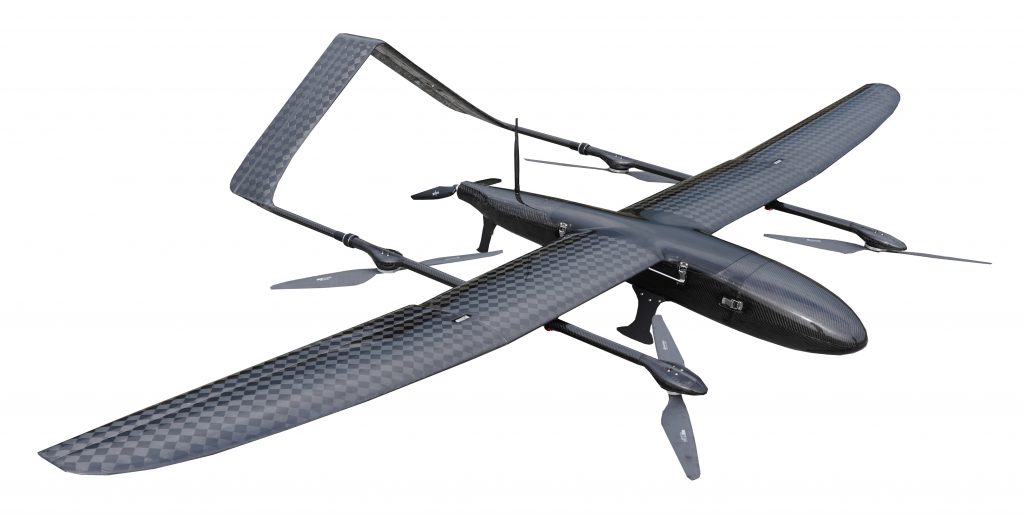Why Choose A Long Endurance Fixed-Wing VTOL UAV ? Leave a comment

When selecting a UAV (Unmanned Aerial Vehicle) to complete the mission of your project you’re going to need to take into consideration a number of factors. The first and most likely one of the most important factors to consider is how long will you need the drone to be in the air. No doubt there are other factors to take into consideration like payload capacity, VTOL (vertical take-off and land) capabilities and many others.
Time is Money
Multi-rotor drones are a lot slower than fixed-wing drones, which travel at a high speed, so getting a job done quickly isn’t usually an option, especially if you need to cover a large area of land. Whether the drone is being used for construction, maintenance, agriculture or public safety, having the drone in the air for longer periods of time saves a lot of time as opposed to bringing it down every half an hour. Fixed-wing drones can fly up to 10x longer than multi-rotor drones. Most of these drones can easily fly a 250-1000+ acre plot in a single flight. When it comes to land surveying, a whole survey can usually be completed in just one flight, saving an incredible amount of time.
Selecting a fixed-wing VTOL (vertical take-off and landing) aircraft is going to save you both time and money, Setting up catapult equipment is a timely exercise, and the cost of this additional equipment along with the heavy duty landing gear are both factors to be considered. FDG30 Mako shark VTOL UAV a powered by battery fixed-wing VTOL aircraft, offers an endurance of up to 6 hours in the air, with a fixed-wing set up to allow for greater flying time.
High Altitude
Long-endurance drones can fly at a higher altitude than other drones. Gathering scientific data for surveys and agriculture is easier because of the vast land expanses and geography that can be covered. Collecting data over a large area of land is more efficient than using a multi-rotor drone that can’t cover as much land in one flight. Most endurance drones can be controlled up to 400 miles.
Payload Capacity
Long-endurance fixed-wing drones can carry more weight than multi-rotor drones. If a drone is being used to carry small parcels, endurance is extremely important. Multi-rotor drones are less powerful than fixed-wing drones, which means that they aren’t able to carry heavy or large loads. Most endurance drones can be up in the air for up to 3 consecutive days, although achieving this type of endurance is rare.
A VTOL fixed-wing UAV does not require additional landing gear, therefore is capable of taking a larger payload capacity. Along with a safe landing and undamaged payload.
FDG30 Mako shark VTOL UAV has a maximum safe payload of up to 1.5kg. For long endurance flights of 6+ hours, a payload of under 1kg is ideal.
Weather
When it comes to weather conditions, fixed-wing UAVs are able to handle far more than multi-rotors. Severe wind drains multi-rotor batteries quickly and owners often need to have a back-up battery to finish a job. A multi-rotor battery lasts approximately 15-20 minutes, while fixed-wing batteries can exceed 45 minutes, meaning they can cover many kilometres once in the air.
FDG30 Mako shark VTOL UAV a fixed-wing VTOL UAV, fully fuelled with no payload can achieve endurance up to 8 hours, in real world conditions at sea level.
Maintenance
Maintenance is also something to think about when comparing fixed-wing and multi-rotor UAVs. Fixed-wing drones have a much simpler structure and is less complicated to maintain and repair. Multi-rotor drones have a more complex mechanical and electronic structure, which means that repairs will take longer and cost a lot more.
A standard fixed-wing drone, which requires a catapult to launch, will continue to take on damage to the aircraft and payload with the impact of each landing. The cost of maintenance per flight is significant. When compared to a fixed-wing VTOL UAV like FDG30 Mako shark VTOL UAV whereby maintenance is relatively low due to smooth take-off and landing.